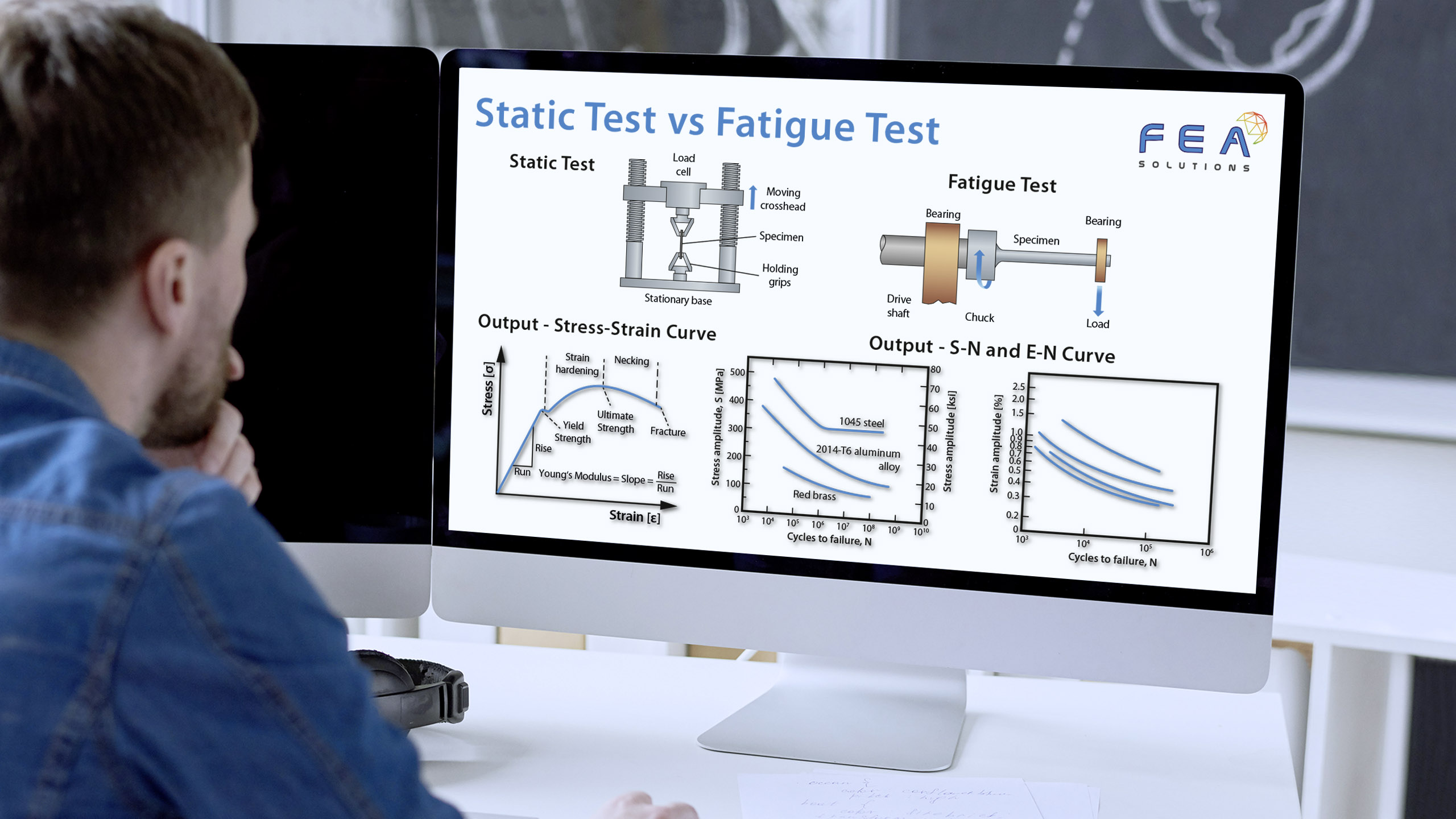
24 Aug Static Test vs Fatigue Test
Static Test vs Fatigue Test
To obtain mechanical properties for a material, physical specimen tests are performed depending on the types of material properties that are desired. Two examples of these tests are:
– Static specimen test
– Fatigue specimen test.
Static tests are used to obtain the mechanical properties required for stress analyses. In most cases, these are tensile specimen tests (https://fea-solutions.co.uk/tensile-tests/). Their results are converted to stress-strain curves (https://fea-solutions.co.uk/stress-strain-curves/). Usually, several specimens are tested to cater for statistical scatter. The specimens are usually flat. The test itself is rather simple, with the load increased continuously over a relatively short time until rupture of the specimen.
The test to obtain fatigue properties is much more involved, due to two reasons:
– Cyclic loading, that means repeated loading and unloading, has to be applied for usually up to 10 million cycles, which takes a considerable amount of time.
– The test has to be repeated at different loads, to obtain the number of cycles until failure at each of the corresponding stress levels.
This will result in many lengthy tests being performed to establish fatigue properties for just one material. The results of fatigue specimen test are graphed in S-N (https://fea-solutions.co.uk/s-n-curves/) or E-N (https://fea-solutions.co.uk/e-n-curves/) curves.
The specimens are usually cylindrical. During the test, they are rotated while subjected to a constant bending moment, thus achieving the cyclic loading.
Fatigue specimen tests are usually only performed for a mean stress (https://fea-solutions.co.uk/mean-stress-correction/) of 0, as repeating the test at different mean stress values would further increase the already considerable number of tests.
Due to the cost associated with the complexity of fatigue specimen tests, fatigue curves are available for only a limited number of materials. There are however methods to approximate S-N and E-N curves from static mechanical properties.
Please call us today on +44 (0)1202 798991 for any engineering analysis requirements you might have.
